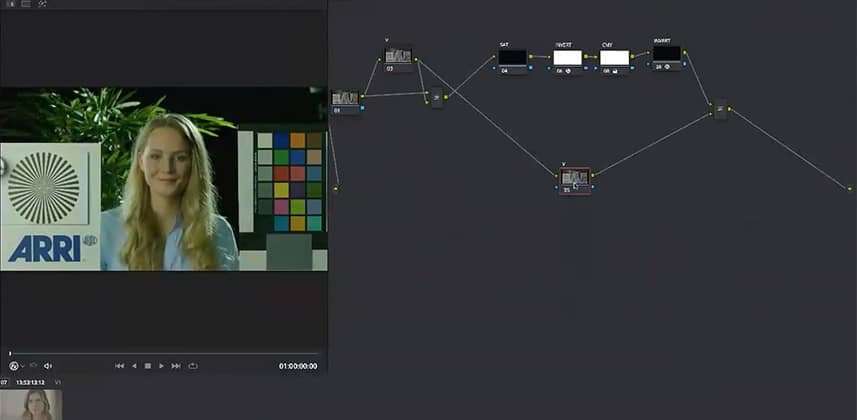| Series |
|---|
Learn how Subtractive Saturation works by building it yourself
Series Note: Cullen Kelly recently finished a series on coding your own DCTL ResolveFX plug-in to create a split-tone look. Today, Cullen starts a new multi-part series teaching you how to use the Layer Mixer node to build really useful tools without going the DCTL or plug-in route.
Math.
In the end, all of our color grading tools are essentially mathematical operations on the red, green, and blue values of each pixel captured by our cameras (or rendered out of software). But some operations are more complicated than others.
The value of many of our favorite plug-ins lies in their ability to make the complex, simple. The cost of this simplicity is that we never learn how to do these things ourselves. We lose insight into what’s going on ‘under the hood’. But if we know the underlying math, we can (potentially) manually recreate the math even if we don’t have access to those plugins.
One of the most powerful ‘math-based’ instruments in the DaVinci Resolve toolbox on the Color Page is the Layer Mixer node (if you need it, at the bottom of this Insight are a few Mixing Light links to get you up to speed on the Layer Mixer node). This node lets you perform math operations in the form of blending modes (as you’d find in Photoshop or After Effects).
Subtractive Saturation: Combining Layer Mixer node math with node-specific color space processing
If you combine the Layer Mixer’s blending modes with Resolve’s ability to switch the color space of the node(s) feeding the Layer Mixer node, you can build sophisticated tools that give you targeted control beyond RGB math.
In this Insight, we learn about one of the hot topics in color grading circles, Subtractive Saturation. In a nutshell, a subtractive saturation tool allows you to add saturation without adding brightness. This behavior has a much more natural look and feel. It also limits your need to follow up saturation increases with isolations to reduce excessively bright saturated elements.
Sign up for a 7-Day Test Drive to explore this topic (and more)
This free Insight is just the tip of the iceberg! We’ve been teaching these topics for a decade.
In this Insight Series, you’ll notice a common theme
We’re building side-branches to our main node trees that allow us to perform a specific set of complicated operations giving us a custom tool for nuanced behaviors not found in the core Resolve toolset. Once you build these node trees, you’ll probably want to save this ‘branch operation’ as a PowerGrade, to add to your node graph while working.
If you like to work with fixed node trees then you can build these side branches into your node trees and hide them as Compound Nodes – reducing node tree clutter.
Premium Members can download the final Subtractive Saturation PowerGrade, built in this Insight. Feel free to use it, deconstruct it, or modify it to your preferences.
Start or Join a discussion in the Comments below
We’re always curious about your thoughts, confusions, questions, or observations – and are happy to answer. Please use the comments below to discuss this Insight!
Related Insights
- Nodes 101 Part 2: Understanding the Layer Mixer and Parallel Mixer nodes
- Using Resolve’s Splitter-Combiner Nodes
- How to use the Layer Mixer as a switch in DaVinci Resolve
- Binary logic in the node tree: Creating procedural node structures
Feb 16, 2022 : The Additional Download of Cullen’s node tree has been updated with the proper DRX for Premium members to download.
Additional Downloads
Sorry... downloads are available for Premium Members only.
Become a Premium Member


